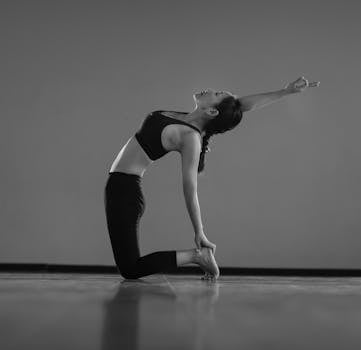
Mind-Body Connection: Enhancing Your Practice with the Principles of Yoga and Pilates
As someone who’s passionate about yoga and Pilates, I’ve always been fascinated by the concept of the mind-body connection. The idea that our thoughts, emotions, and physical sensations are all interconnected is both intriguing and intuitive. In this article, we’ll explore the principles of yoga and Pilates and how they can help us cultivate a stronger mind-body connection.
What is the Mind-Body Connection?
The mind-body connection refers to the complex web of relationships between our thoughts, emotions, and physical sensations. It’s the idea that our mental and emotional states can affect our physical well-being, and vice versa. For example, when we’re stressed or anxious, our bodies respond with physical symptoms like tension headaches or a knot in our stomachs. Conversely, when we’re feeling relaxed and calm, our minds are more focused and clear.
The Principles of Yoga and Pilates
Both yoga and Pilates are practices that aim to cultivate a stronger mind-body connection. They do this by combining physical movements with breathing techniques, meditation, and mindfulness exercises. The principles of yoga and Pilates can be applied to our daily lives to improve our overall well-being and enhance our mind-body connection.
The 5 Key Principles of Yoga
- Pranayama (Breath Control): Yoga teaches us the importance of breathing techniques to calm the mind and balance the body.
- Asana (Posture): Yoga postures help us develop strength, flexibility, and balance, while also cultivating awareness and focus.
- Dhyana (Meditation): Yoga meditation helps us quiet the mind, focus our attention, and access a deeper state of consciousness.
- Pratyahara (Sense Withdrawal): Yoga teaches us to withdraw our senses from the external world and focus on our internal experience.
- Samadhi (Union): The ultimate goal of yoga is to experience a state of union or oneness with ourselves, others, and the universe.
The 8 Key Principles of Pilates
- Centering: Pilates emphasizes the importance of engaging our core muscles to stabilize and balance the body.
- Concentration: Pilates requires focused attention and concentration to execute movements with precision and control.
- Control: Pilates teaches us to use our minds to control our movements, rather than relying on momentum or force.
- Precision: Pilates emphasizes the importance of precise alignment and movement to avoid injury and optimize benefits.
- Flow: Pilates movements are designed to flow smoothly and efficiently, like a dance.
- Integration: Pilates integrates the body, mind, and spirit to promote overall well-being and fitness.
- Isolation: Pilates teaches us to isolate specific muscle groups to target and strengthen them.
- Rhythm: Pilates movements are often performed to a rhythmic beat, which helps us stay focused and engaged.
Applying the Principles of Yoga and Pilates to Enhance Your Mind-Body Connection
So, how can we apply the principles of yoga and Pilates to enhance our mind-body connection? Here are a few tips:
- Start with small, manageable practices, such as taking a few minutes each day to focus on your breath or practice a simple yoga pose.
- Be consistent and patient with your practice, as cultivating a stronger mind-body connection takes time and effort.
- Experiment with different techniques and styles to find what works best for you, whether it’s yoga, Pilates, or a combination of both.
- Focus on the process, rather than the outcome, and enjoy the journey of discovery and growth.
Conclusion
In conclusion, the principles of yoga and Pilates offer a powerful framework for enhancing our mind-body connection and improving our overall well-being. By applying these principles to our daily lives, we can cultivate greater awareness, balance, and harmony in our bodies, minds, and spirits. So, take a deep breath, find a quiet space, and start exploring the amazing world of yoga and Pilates – your mind, body, and spirit will thank you!






